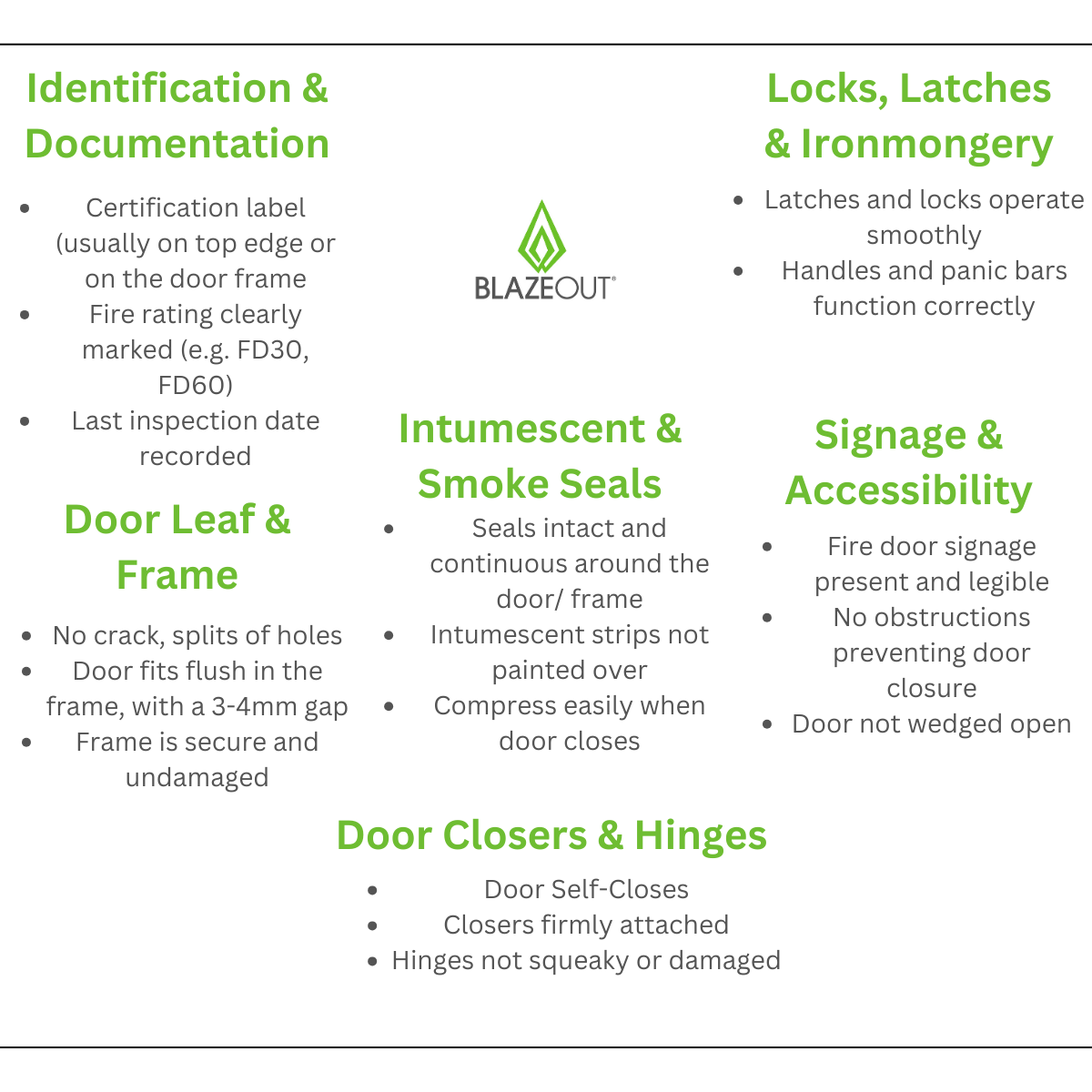Fire Doors: Vital necessity
In the intricate requirements of building safety, fire doors stand as guardians against the unending threat of fire. These specialized doors, fortified with meticulous engineering and robust hardware, play an irreplaceable role in preventing the spread of flames and safeguarding lives. In this comprehensive guide, we’ll go deeper into the main considerations for fire doors and explore the intricacies of the essential hardware that transforms them into an impenetrable barrier against the destructive force of fire, all while adhering to rigorous BS EN testing standards.

Understanding Fire Doors: A Vital Component of Building Safety
1. Material Matters:
Fire doors are crafted from materials that can withstand extreme temperatures, ensuring structural integrity during a fire.
- BS EN Standard: BS EN 1634-1:2014 – Fire resistance and smoke control tests for door and shutter assemblies, openable windows, and elements of building hardware.
2. Integrity and Insulation:
Beyond structural integrity, fire doors provide insulation against heat, smoke, and toxic gases, crucial for occupant safety.
- BS EN Standard: BS EN 1634-3:2004 – Fire resistance tests for door and shutter assemblies, and openable windows. Elements used in the fire separation.
3. Certification and Compliance:
Certification marks like the CE mark signify compliance with fire safety standards, ensuring the door’s effectiveness during a fire.
- BS EN Standard: BS EN 1634-3:2004 – Fire resistance tests for door and shutter assemblies, and openable windows. Elements used in the fire separation.
4. Seals and Smoke Control:
Intumescent seals expand under heat, sealing gaps and preventing the passage of smoke and flames.
- BS EN Standard: BS EN 1634-3:2004 – Fire resistance tests for door and shutter assemblies, and openable windows. Elements used in the fire separation.
5. Self-Closing Mechanism:
A self-closing mechanism ensures the door closes automatically during a fire, hindering the spread of flames and smoke.
- BS EN Standard: BS EN 1154:1997 – Building hardware. Controlled door closing devices.
The Essential Hardware that Completes the Fire Door Set
1. Fire Door Hinges:
Specially designed hinges resist fire and heat, allowing the door to close automatically in the event of a fire.
- BS EN Standard: BS EN 1935:2002 – Building hardware. Single-axis hinges.
2. Door Closers:
Door closers ensure the door shuts securely after every use, a critical feature for maintaining fire compartmentation.
- BS EN Standard: BS EN 1154:1997 – Building hardware. Controlled door closing devices.
3. Locks and Latches:
Fire-rated locks and latches maintain the door’s integrity and prevent unauthorized access during a fire.
- BS EN Standard: BS EN 12209:2003 – Building hardware. Locks and latches. Mechanically operated locks, latches, and locking plates.
4. Fire Door Signage:
Clear and visible signage indicates that the door is a fire door, emphasizing the importance of keeping it closed.
- BS EN Standard: BS EN ISO 7010:2012 – Graphical symbols. Safety colours and safety signs. Registered safety signs.
5. Vision Panels:
Fire-rated vision panels provide visibility while maintaining the door’s fire-resistant properties.
- BS EN Standard: BS EN 356:2000 – Glass in building. Security glazing. Testing and classification of resistance against manual attack.
6. Kick Plates and Push Plates:
These protective plates ensure the door remains operational during emergencies, safeguarding against damage.
- BS EN Standard: BS EN 1906:2010 – Building hardware. Lever handles and knob furniture.
7. Thresholds and Seals:
Intumescent door seals and thresholds play a key role in preventing the spread of smoke and fire.
- BS EN Standard: BS EN 1634-3:2004 – Fire resistance tests for door and shutter assemblies, and openable windows. Elements used in the fire separation.
Ensuring Fire Door Effectiveness: Best Practices
1. Regular Inspections:
Schedule routine inspections to ensure all components of the fire door set are in optimal working order.
2. Proper Installation:
Ensure that fire doors are installed by qualified professionals to guarantee correct functionality.
3. Training and Awareness:
Educate building occupants on the importance of fire doors and the proper way to use them during an emergency.
Conclusion:
Fire doors, fortified with the right hardware and adhering to stringent BS EN testing standards, represent the first line of defence against the destructive force of fire. They are a vital part of the passive fire line of defence. Understanding the intricacies of fire door design and hardware, coupled with diligent maintenance practices, ensures a safer built environment for all. Invest wisely in fire doors and their essential hardware – because when it comes to fire safety, meticulous attention to detail is non-negotiable.





